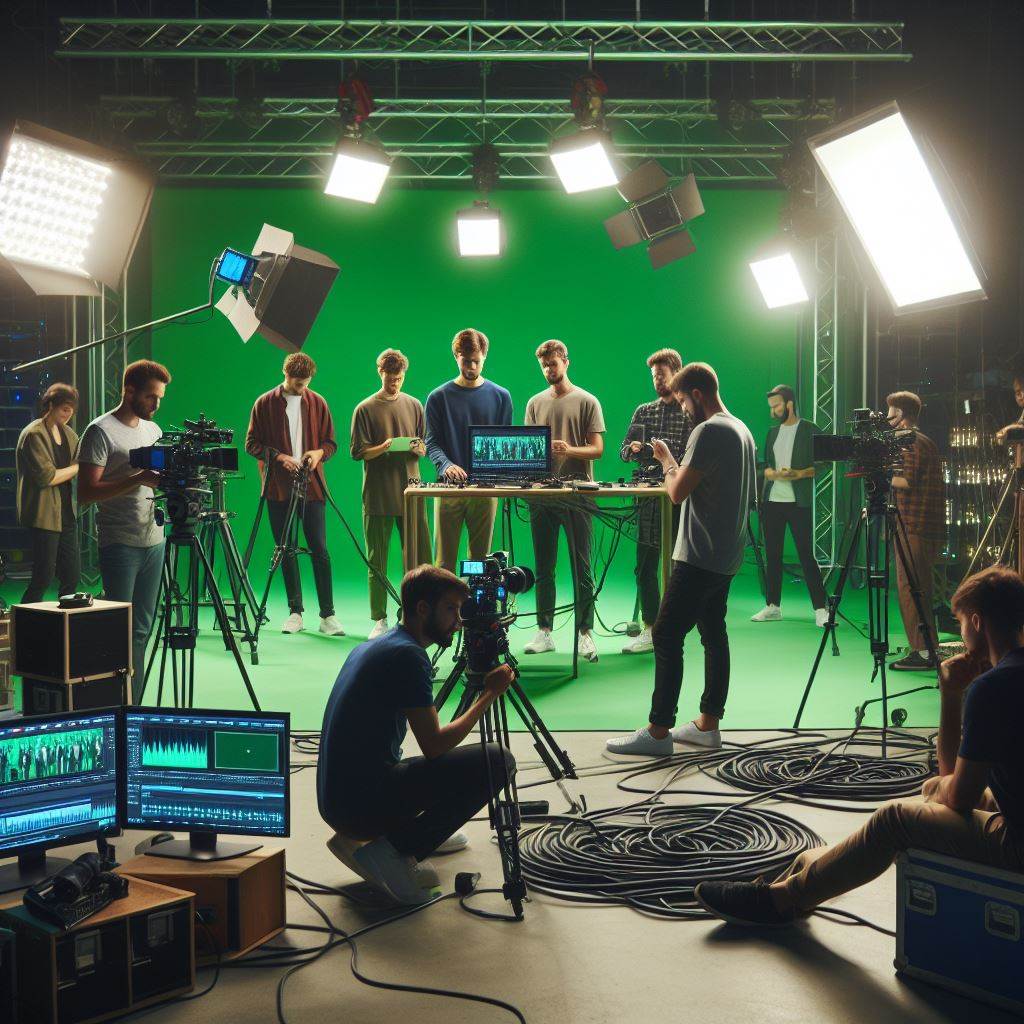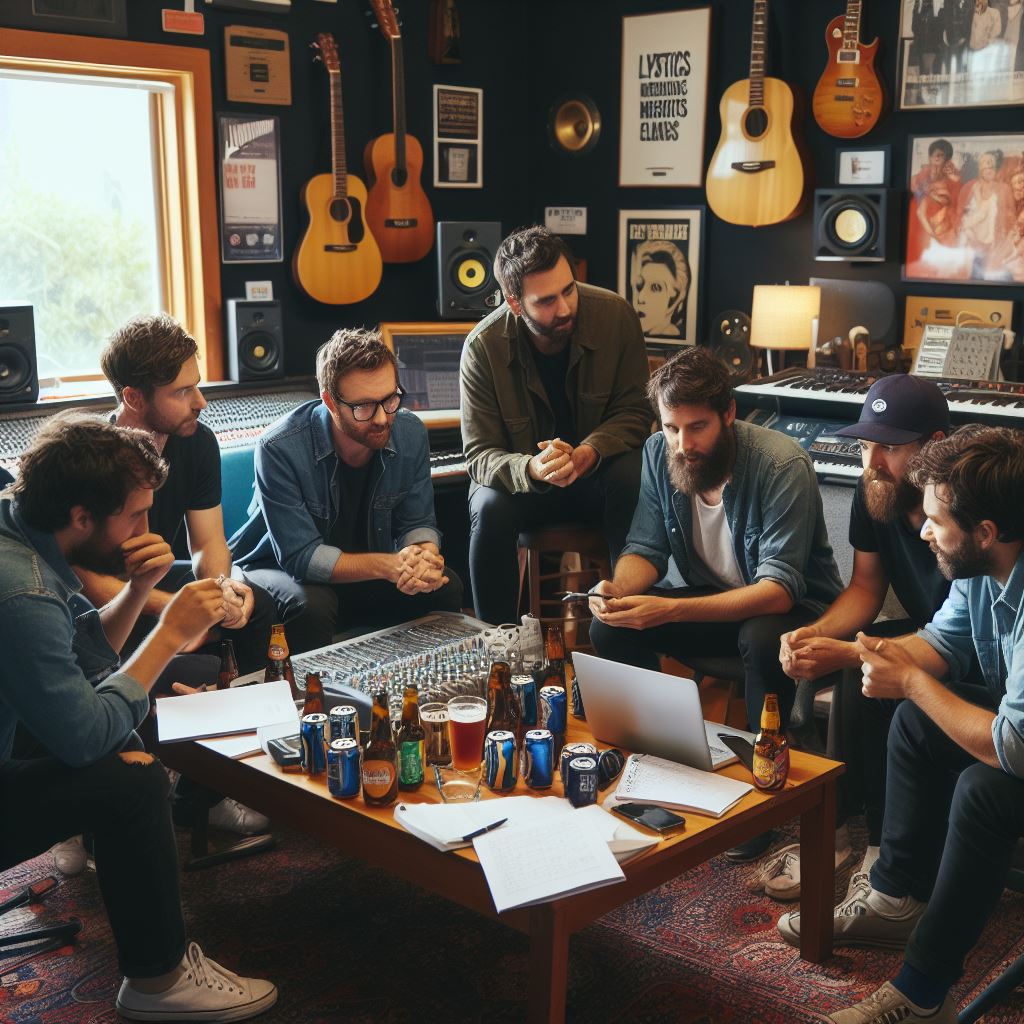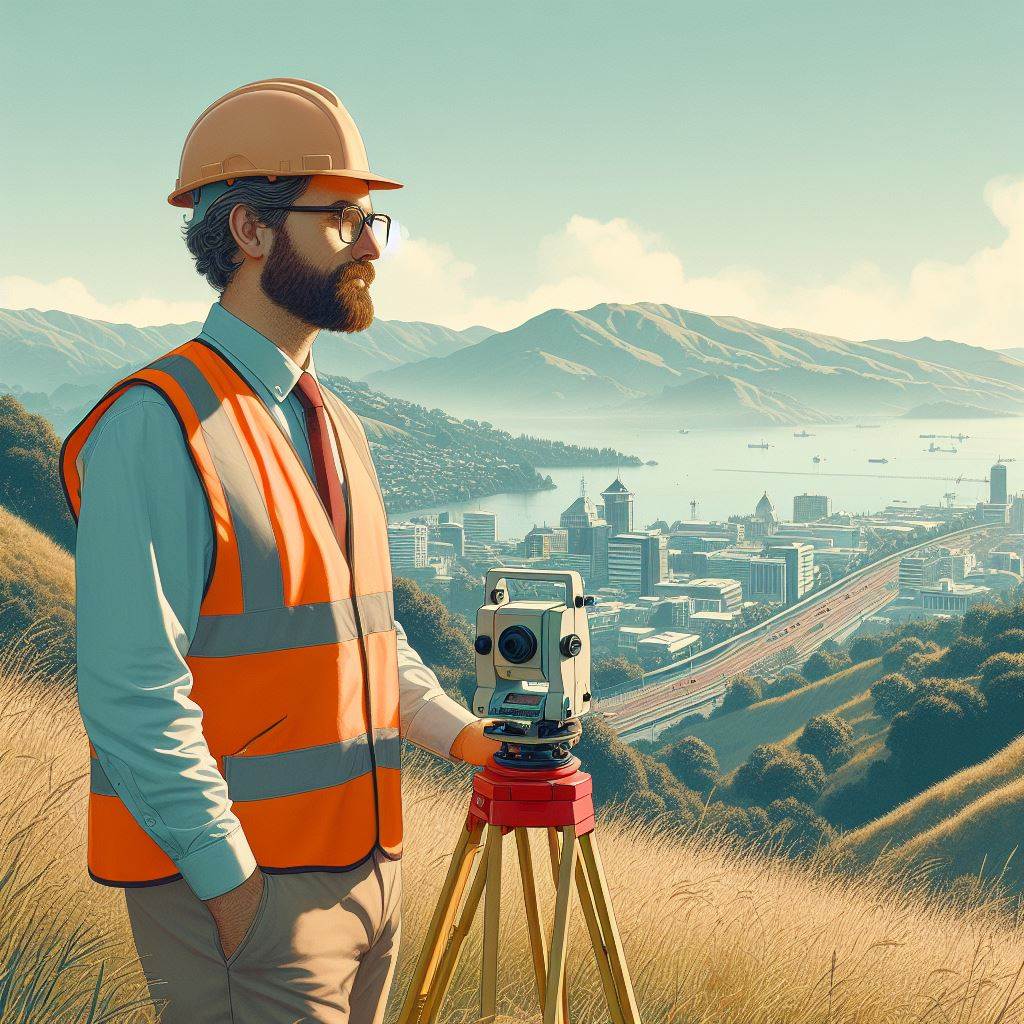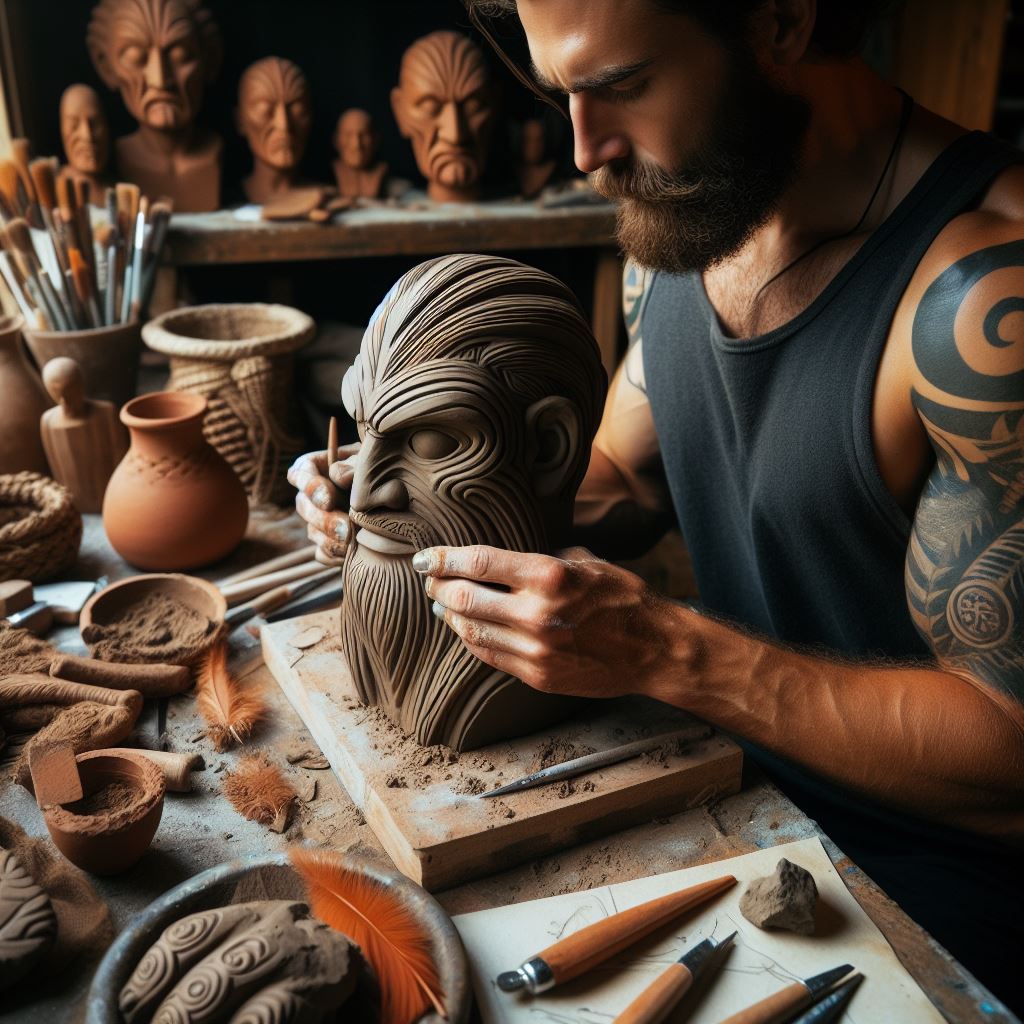Introduction
In this blog post, we will explore the various film production roles in New Zealand and highlight their importance for aspiring filmmakers.
Understanding these roles is crucial for anyone looking to enter the film industry in NZ.
Significance of understanding these roles for aspiring filmmakers
By grasping the different responsibilities and functions of each role, aspiring filmmakers can effectively collaborate with professionals in the industry.
This knowledge will enable them to better contribute to the filmmaking process and enhance their own creative abilities.
Overview of the blog post content
Throughout this blog post, we will delve into the details of different film production roles, including the director, producer, cinematographer, production designer, and editor.
Each role plays a unique part in bringing a film to life.
By understanding the functions of these roles, aspiring filmmakers can identify the area they are most interested in and pursue the necessary skills and experience.
We will also highlight the potential career paths and opportunities available within these roles.
Additionally, we will discuss the significance of networking and building connections in the film industry.
It is essential for aspiring filmmakers to establish relationships with professionals in the field in order to gain insights, opportunities, and support.
This blog post aims to provide aspiring filmmakers with a comprehensive overview of film production roles in NZ, emphasizing their importance and offering guidance on how to pursue a fulfilling career in the industry.
The Key Players in Film Production
The Role of the Producer
The producer is responsible for overseeing the entire film production project, from start to finish.
They handle the business and financial aspects of the film, securing funding, and managing the budget.
They collaborate with the director and other key team members to develop the creative vision and ensure it aligns with the project goals. The producer also makes crucial decisions, such as selecting the cast and crew.
Furthermore, they handle negotiations, contracts, and legal issues, ensuring the smooth workflow of the production.
The producer is the driving force behind the project, ensuring all elements come together to create a successful film.
The Duties and Responsibilities of the Director
The director plays a crucial role in shaping the creative vision of the film. They work closely with the producer and screenwriter to develop the script and bring it to life on the screen.
The director is responsible for overseeing the entire filmmaking process, from pre-production to post-production.
They guide the actors, providing instructions on performance, blocking, and characterization.
During filming, the director makes real-time decisions, ensuring each scene is shot according to their vision. They collaborate with the cinematographer to establish the desired look and feel of the film.
In post-production, the director works closely with the editor to shape the final version of the film, ensuring it aligns with the intended creative vision.
The Importance of the Cinematographer
The cinematographer, also known as the director of photography, is responsible for capturing the desired aesthetic of the film.
They work closely with the director to translate the creative vision into cinematic language.
Using their technical expertise and artistic sensibility, the cinematographer determines the lighting, camera angles, and composition of each shot.
They carefully select the right equipment and film stock to achieve the desired visual effects.
Personalized Career Consulting
Unlock your potential with expert career advice tailored to your goals. Get personalized guidance and actionable steps toward your dream career in New Zealand.
Get StartedThe cinematographer also collaborates with the production designer and costume department to ensure the overall visual coherence of the film. They create the mood and atmosphere through their mastery of lighting techniques and camera movements.
Their contribution is essential in immersing the audience in the story and evoking the intended emotion.
In the world of film production, the key players mentioned above – the producer, director, and cinematographer – each play critical roles in bringing a film to life.
They work collaboratively, combining their expertise and creative visions to create memorable cinematic experiences.
While the producer oversees the project as a whole, the director shapes the creative vision, and the cinematographer captures the desired aesthetic.
Read: NZ Bands Making Global Waves
Pre-production Roles
In film production, the pre-production stage is crucial in laying the foundation for a successful film.
This stage involves various roles and responsibilities that contribute to the overall visual concept and preparation of the film. Let’s take a closer look at some of these roles:
Production Designer
The production designer holds a key role in creating the visual concept of the film. They work closely with the director and the cinematographer to establish the overall look and feel of the movie.
Their responsibilities include designing sets, selecting props, and collaborating with the art department to bring the director’s vision to life.
Casting Director
Another important pre-production role is that of the casting director. They are responsible for selecting actors for the various roles in the film.
The casting director works closely with the director, producer, and sometimes the writer to find the perfect fit for each character.
Their knowledge of the industry and understanding of the script’s requirements play a crucial role in assembling the right cast.
Location Scout
The location scout plays a significant role in the pre-production process by finding suitable shooting locations.
They work closely with the director and production designer to identify the right locations that align with the film’s vision.
A location scout must have a good eye for detail, be familiar with the local area, and have excellent negotiation skills when dealing with property owners.
Art Director
An essential pre-production role is that of the art director. They work closely with the production designer to oversee the art department and ensure the visual elements of the film are cohesive.
The art director manages the set construction, prop creation, and overall aesthetics of the film, ensuring that everything aligns with the production designer’s vision.
Costume Designer
The costume designer is responsible for creating and selecting costumes that align with the characters and the overall visual concept.
They work closely with the director and production designer to understand the characters’ personalities and style, ensuring that the costumes enhance the storytelling.
The costume designer must also consider practicality and budget constraints during the selection process.
Makeup and Hair Stylist
The makeup and hair stylist play a crucial role in enhancing the actors’ appearance and transforming them into the characters they portray.
They work closely with the director, costume designer, and actors to understand the desired look.
The makeup and hair stylist must have strong technical skills and creativity to achieve the desired visual effects.
Production Coordinator
The production coordinator is responsible for overseeing the logistical aspects of the pre-production process.
They assist in scheduling, budgeting, and coordinating various departments to ensure a smooth workflow.
The production coordinator acts as a liaison between different departments, ensuring effective communication and organization throughout the pre-production stage.
In general, the pre-production stage of film production involves several important roles that contribute to the overall vision and preparation of the film.
From the production designer’s creation of the visual concept to the casting director’s selection of actors and the location scout’s discovery of suitable shooting locations, each role plays a significant part in bringing the film to life.
The collaboration and expertise of these professionals set the groundwork for a successful production.
Transform Your Career with a Professional CV and Cover Letter
Stand out to employers with an ATS-optimized resume and tailored cover letter designed to match your dream role. Let us craft your job application materials for success!
Get StartedRead: Women in NZ Music: Rising Stars
Production Roles
In film production, various roles and responsibilities are crucial for the successful organization and execution of a project.
Three key roles that play a significant part in the film production process are the production manager, assistant director, and sound recordist.
Production Manager
- Organizes logistics, including locations, equipment, and transportation, ensuring smooth operations.
- Creates schedules and timelines, collaborating with the director and department heads to keep the project on track.
- Manages the budget by overseeing expenditures and negotiations with vendors to optimize resources.
- Hires and supervises production staff, ensuring each team member understands their roles and responsibilities.
- Coordinates with other departments such as art, wardrobe, and make-up to maintain a cohesive production.
Assistant Director
- Assists the director in various aspects of production, coordinating logistics, and overseeing the set.
- Creates call sheets and schedules, ensuring that everyone involved knows when and where to be on set.
- Manages the cast and crew, ensuring smooth communication and facilitating a productive work environment.
- Coordinates with other departments to ensure the production remains on schedule and within budget.
- Organizes rehearsals and blocking sessions, working closely with actors to achieve the director’s vision.
Sound Recordist
- Records high-quality audio during production, ensuring clear and synchronized sound.
- Selects and sets up the appropriate microphones and sound recording equipment for each scene.
- Monitors audio levels, eliminating background noise and maintaining consistent sound quality throughout.
- Collaborates with the director and post-production team to capture audio that complements the visuals.
- Works closely with the boom operator to capture dialogue and ambient sounds effectively.
Production Manager
These production roles are critical in ensuring the success of a film project. The production manager’s duties center around organization and efficiency, keeping the project on schedule and within budget.
The assistant director plays a vital role in coordinating the production set, managing the cast and crew, and assisting the director.
The sound recordist captures high-quality audio, ensuring that the dialogues and sounds enhance the overall production value.
Assistant director in coordinating and managing the production set
By collaborating and working seamlessly with other departments and team members, these production roles contribute to the overall success of a film project.
The efficient organization, coordination, and capturing of high-quality audio are key elements that result in a polished and captivating final product.
Sound Recordist
Understanding the responsibilities and significance of these production roles in the New Zealand film industry provides a glimpse into the intricate workings of the production process.
Each role contributes to the creation of a well-executed and visually appealing film that captivates audiences worldwide.
Read: NZ Music Festivals: Behind Scenes
Post-production Roles
In the final stages of film production, several key roles come into play to bring all the elements together and create the final product. These roles include the film editor, visual effects artist, and sound designer.
Importance of the film editor in assembling footage and creating the final product
The film editor plays a crucial role in assembling all the footage captured during the production process.
They carefully select the best shots, arrange them in a logical sequence, and eliminate any unnecessary or redundant scenes.
Through their artistic touch, the film editor shapes the narrative and pacing of the film.
The duties of the visual effects artist in enhancing the film with computer-generated imagery
Using their technical expertise and creativity, the visual effects artist enhances the film with computer-generated imagery (CGI).
They bring to life what is impossible or too dangerous to capture during production, such as breathtaking action sequences, fantastical creatures, or futuristic landscapes.
The visual effects artist seamlessly integrates these elements into the live-action footage, immersing the audience in a visually stunning world.
While the visual effects artist focuses on the visuals, the sound designer works diligently to create a cohesive auditory experience.
They manipulate and enhance all the sounds in the film, including dialogue, background noise, and ambient effects.
The sound designer carefully selects or creates sound effects to emphasize certain emotions, heighten suspense, or add depth to a scene.
They also collaborate with composers to ensure the music complements the visuals and enhances the overall mood.
Role of the sound designer in creating a cohesive auditory experience
In addition to these roles, other post-production tasks contribute to the final product. The film’s colorist adjusts the color grading to establish the desired mood or visual style.
This process can dramatically change the atmosphere of a scene, from warm and vibrant to cold and desaturated. The colorist works closely with the director and cinematographer to achieve the intended look.
The post-production team also includes the sound editor and the re-recording mixer.
The sound editor focuses on fine-tuning individual elements, such as dialogue clarity, sound effects synchronization, and background noise removal.
The re-recording mixer then balances and mixes all the audio elements, ensuring that they blend seamlessly and deliver a clear and immersive soundscape.
Finally, the post-production supervisor oversees the entire post-production process, ensuring that everything stays on track and meets deadlines.
They coordinate the efforts of all the team members, communicate with the director and producers, and handle any unexpected challenges that may arise during post-production.
Boost Your Career with a Standout LinkedIn Profile
Attract recruiters and expand your network with a fully optimized LinkedIn profile tailored to highlight your strengths and professional goals. Let your profile open doors to new opportunities!
Get OptimizedUltimately, post-production roles are essential in bringing together all the elements of a film and creating the final product.
From the film editor shaping the narrative, the visual effects artist enhancing the visuals, to the sound designer creating an immersive auditory experience, each role contributes to the overall success of the film.
The collaboration and expertise of these professionals ensure that the vision of the filmmakers is fully realized and that audiences can enjoy a captivating and cohesive cinematic experience.
Read: Maori Music: NZ’s Rich Heritage

Supporting Roles
In film production, there are various supporting roles that contribute to the overall success of a movie. These roles may not be as well-known as the director or actor, but their contributions are just as crucial.
The Gaffer: Lighting the Set Effectively
One important supporting role is that of the gaffer. The gaffer is responsible for the lighting of the set and plays a vital role in creating the desired atmosphere for each scene.
- The gaffer works closely with the director of photography to determine the lighting needs of each scene.
- They are responsible for setting up and operating the lighting equipment, ensuring the set is well-lit and visually appealing.
- They must have a deep understanding of lighting techniques and be able to manipulate light to achieve the desired effects.
- The gaffer often has a team of electricians and grips who assist in the setup and maintenance of the lighting equipment.
- By effectively lighting the set, the gaffer contributes to the overall visual aesthetics and mood of the film.
Costume Designer: Creating the Characters’ Wardrobe
The costume designer plays a crucial role in bringing the characters to life through their wardrobe choices.
- The costume designer collaborates closely with the director and production designer to create the look and feel of the characters.
- They carefully study the script and character breakdowns to understand the personalities and motivations of each character.
- Based on their research, the costume designer selects or creates costumes that reflect the characters’ personalities, time period, and setting of the film.
- They must consider factors such as color, texture, and style to ensure the costumes are visually appealing and contribute to the believability of the characters.
- The costume designer also works closely with the wardrobe team to ensure the costumes are properly fitted, maintained, and ready for each day of shooting.
Script Supervisor: Maintaining Continuity
The script supervisor is responsible for maintaining continuity throughout the film production process.
- During pre-production, the script supervisor carefully reads and analyzes the script to identify any continuity issues.
- They create detailed notes and breakdowns of each scene, including dialogue, action, and props.
- On set, the script supervisor closely monitors each take to ensure consistency in performance, dialogue, and continuity of props and costumes.
- They work closely with the director and editor to make sure the final product remains coherent and flows seamlessly.
- The script supervisor also keeps track of the shooting schedule and ensures that scenes are filmed in the correct order.
While these supporting roles may not receive as much recognition as other positions in film production, their contributions are vital to the success of a movie.
The gaffer, costume designer, and script supervisor each play a unique role in creating a visually appealing and cohesive final product.
Training and Career Opportunities
- There are several educational programs and courses available in film production in NZ.
- One popular option is the Bachelor of Screen Production degree offered by various universities.
- This program provides students with practical training in all aspects of film production.
- Students gain hands-on experience by working on real film projects during their studies.
- Another option is the New Zealand Film School, which offers intensive filmmaking courses.
- These courses provide a focused and immersive learning experience for aspiring filmmakers.
- Students learn everything from scriptwriting and directing to cinematography and post-production.
- In addition to university programs and film schools, there are also short courses available.
- These courses are ideal for individuals who want to learn specific skills or enhance their existing knowledge.
- For example, there are courses on film editing, sound design, visual effects, and screenwriting.
- The NZ film industry offers a wide range of career paths for aspiring filmmakers.
- One common career path is becoming a film director, where you oversee the creative vision of a film.
- Film producers are responsible for the overall production of a film, from financing to distribution.
- Screenwriters create the script and narrative for a film, playing a crucial role in storytelling.
- Cinematographers are in charge of capturing the visual elements of a film through camera work.
- Editors then take the raw footage and piece it together to create a cohesive and engaging story.
- Other career paths include production designers, art directors, sound designers, and visual effects artists.
- These roles contribute to the overall look, feel, and sound of a film.
- There are opportunities to work in film distribution, marketing, and film festival programming.
- Networking and building connections within the industry are crucial for career advancement.
Resources for Aspiring Filmmakers
- For those considering a career in the NZ film industry, there are several resources available.
- The New Zealand Film Commission provides funding and support for local filmmakers.
- They offer advice and guidance for aspiring filmmakers, including information on funding opportunities.
- Screen Auckland provides a range of resources and services to support film production in the Auckland region.
- Their website offers information on locations, permits, and local crew and equipment hire.
- Screen Production and Development Association (SPADA) is a professional association for the NZ screen industry.
- They provide networking opportunities, advice, and representation for filmmakers.
- Various online communities and forums, such as Filmmakers Network and ScreenTalk, allow filmmakers to connect and share knowledge.
- Attending film festivals and industry events is also a great way to network and learn from experienced professionals.
- There are plenty of resources and opportunities for aspiring filmmakers to gain further knowledge and experience in the NZ film industry.
Conclusion
Key points discussed in the blog post
We have explored the various film production roles in NZ and their significance within the industry.
From directors and producers to cinematographers and editors, each role plays a crucial part in bringing a film to life. Collaboration among these roles is essential for the success of any production.
Importance of collaboration among various film production roles
The importance of collaboration cannot be overstated. Effective teamwork and communication lead to a cohesive vision and smooth production process.
Without collaboration, a film may lack coherence and artistic integrity.
It is worth noting that the film industry in NZ offers diverse opportunities for those interested in pursuing a career in film production.
From big-budget blockbusters to independent films, there is a wide range of projects to be a part of.
Encourage readers to explore the diverse opportunities in film production in NZ
Whether you aspire to be a director, screenwriter, or production designer, NZ provides a fertile ground for honing your skills and making a mark in the industry.
The country’s breathtaking landscapes and well-established film infrastructure make it an attractive destination for filmmakers from around the world.
Therefore, we encourage our readers to explore the diverse opportunities that film production in NZ has to offer.
Embrace the collaborative nature of the industry and seize the chance to work with talented professionals from various disciplines.
Who knows, your passion for film production could lead you to be a part of the next cinematic masterpiece to come out of New Zealand.
So, don’t hesitate to embark on this exciting journey and make your mark in the world of film production.




